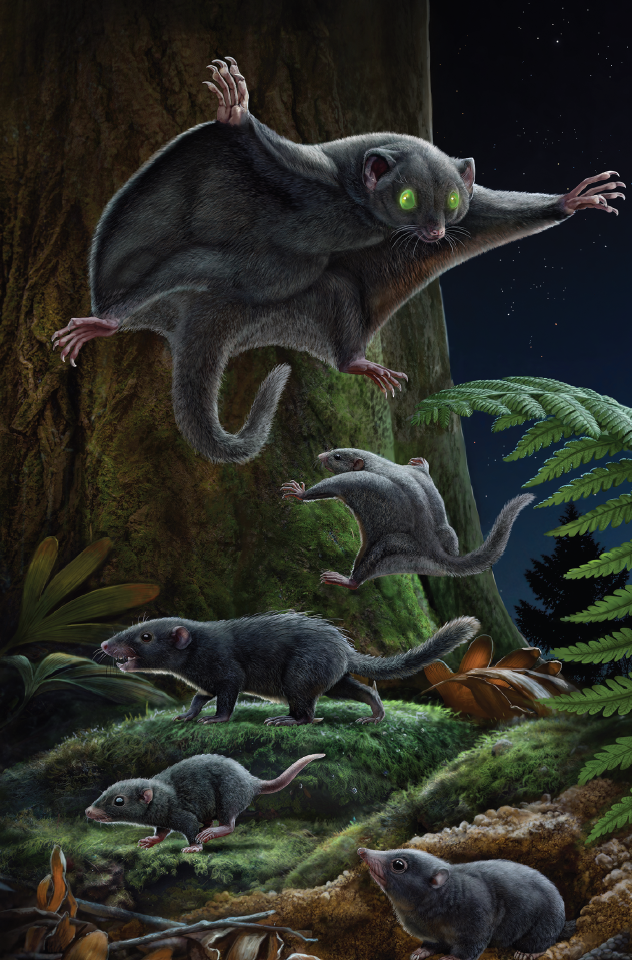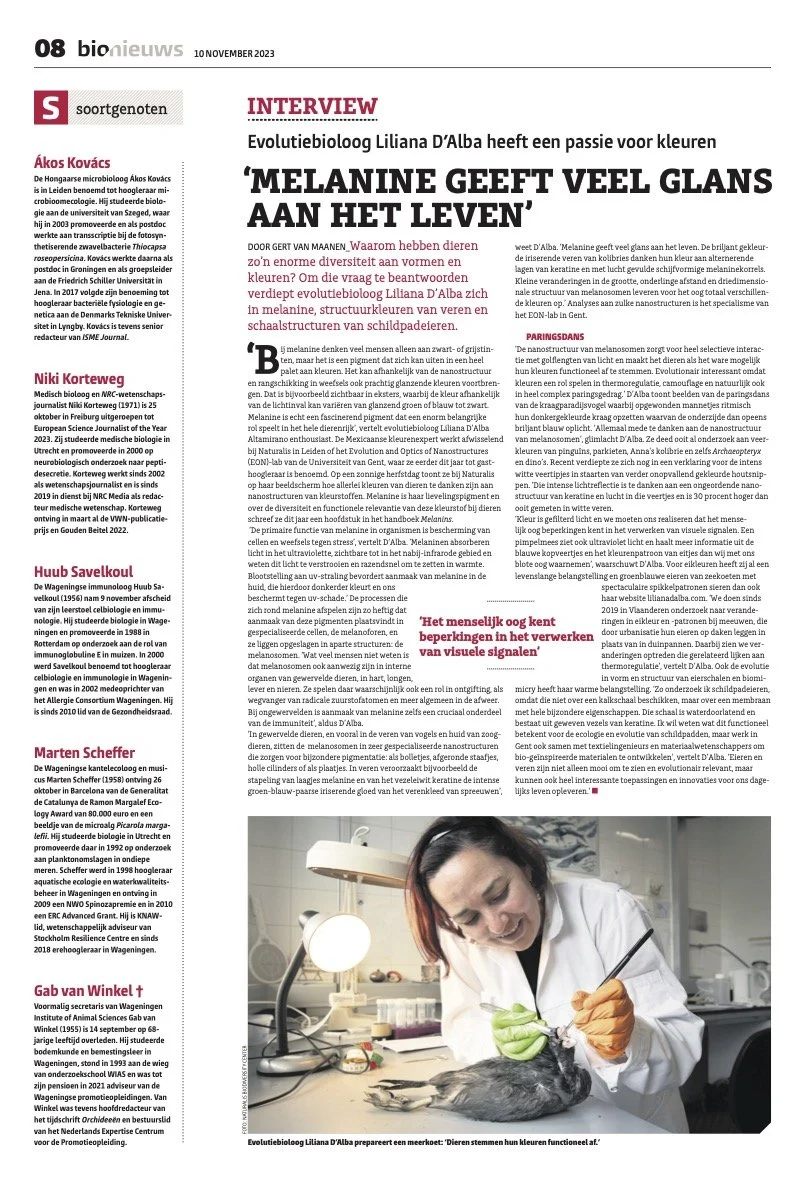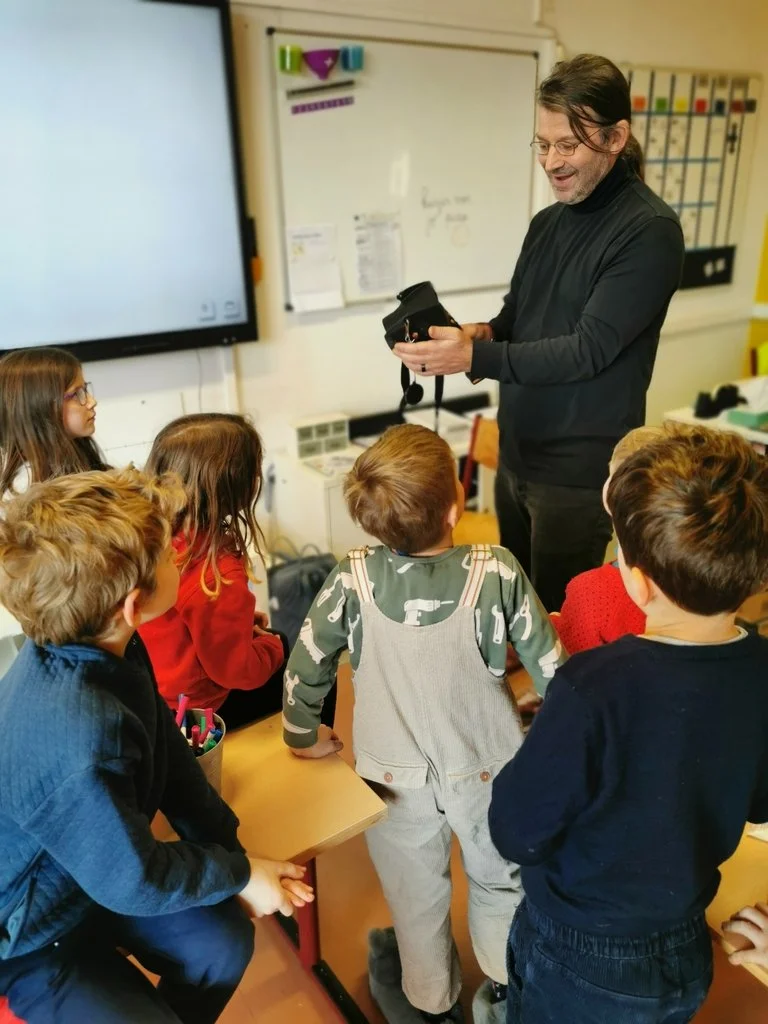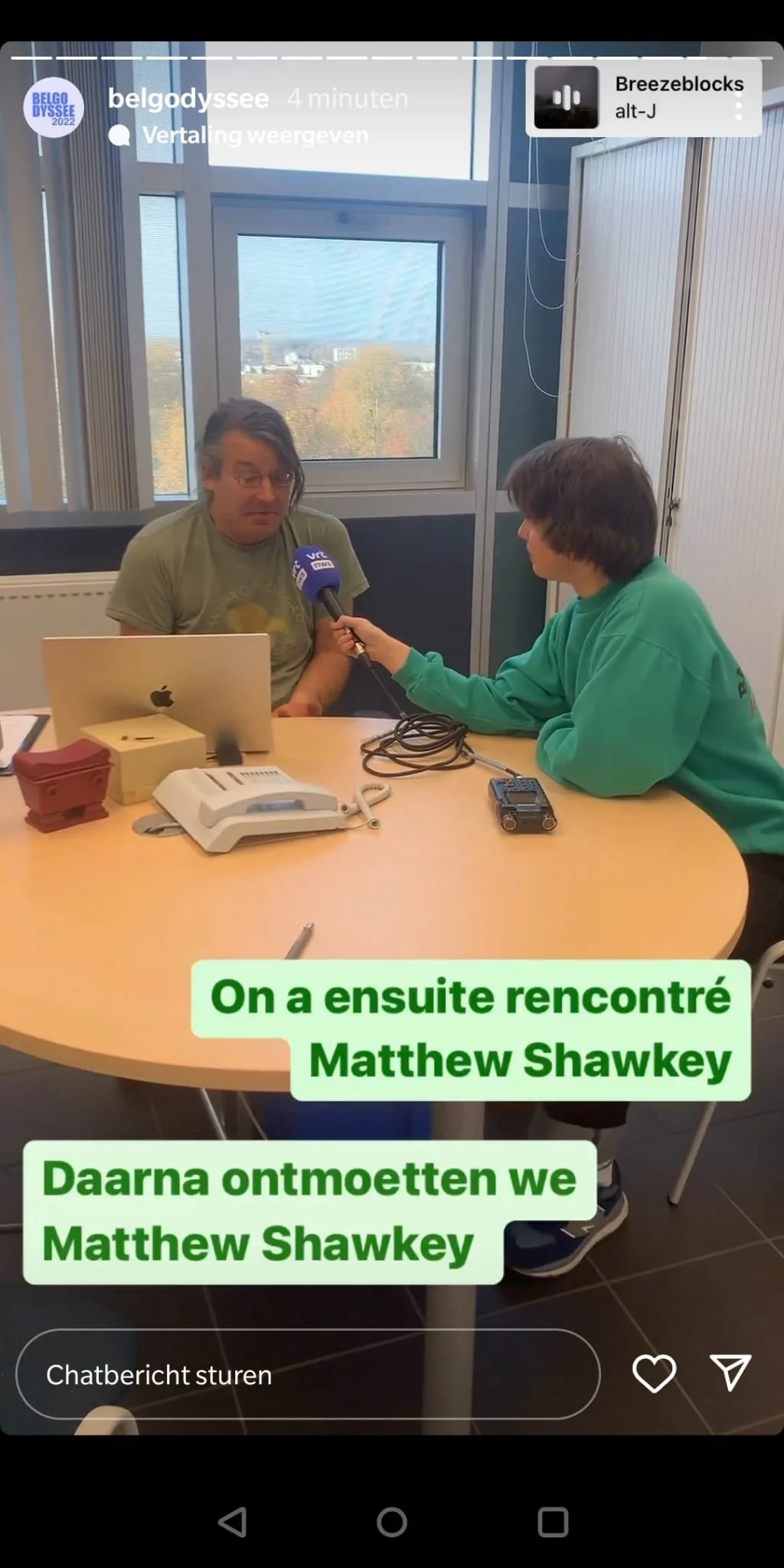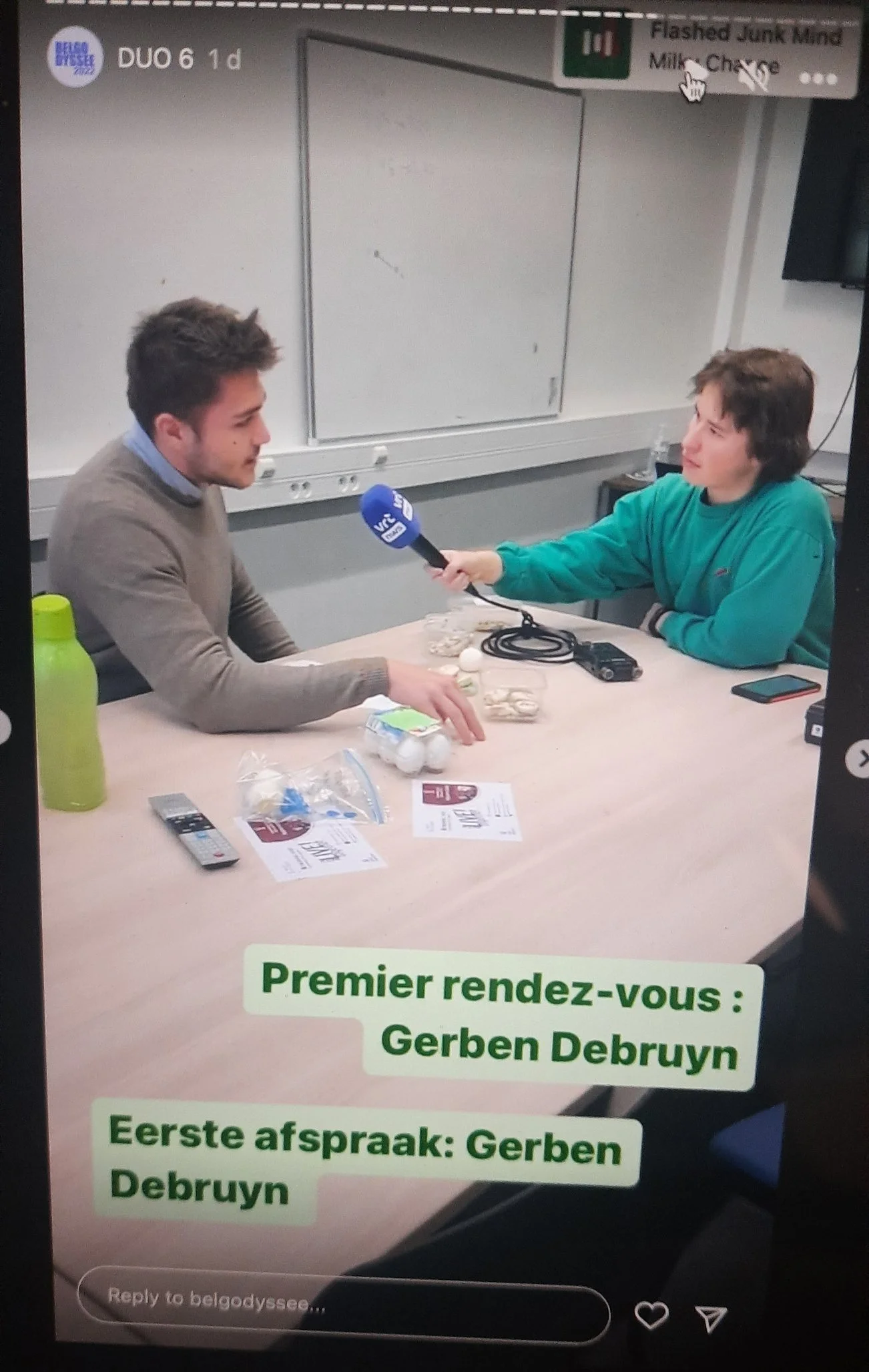Mesozoïc mammaliaforms illuminate the origins of pelage coloration
Our recent discovery that provides a rare glimpse into the early evolution of mammals is now covered by National Geographic.
Want to know more about how the blue-footed booby uses his feet to attract potential partners?
The blue-footed booby
A bird with a foot fetish
Liliana profiled in Dutch science magazine
Lilliana was interviewed about her research in the magazine Bionieuws
Liliana werd geïnterviewd over haar onderzoek door het tijdschrift Bionieuws
Humidity-dependent colour change
In our latest research, Bram studied the rapid and reversible colour change in a scaled spring tail. This colour change is especially interesting because it is humidity dependent!
Bram onderzocht op welke manier de schalen van de Collembola zo snel van kleur kunnen veranderen. Dit proces bleek afhankelijk te zijn van de luchtvochtigheid en volledig omkeerbaar!
Super-white feathers
Our article on super-white feathers in Eurasian Woodcock was covered in Audubon magazine
Onze artikel over superwitte veren in houtsnip stond in Audubon tijdschrift
https://www.audubon.org/news/drab-fab-woodcocks-wear-whitest-whites-avian-wardrobe
Podcast appearance
Liliana D’Alba was featured on a French language podcast about color!
Liliana D’Alba was te zien op een Franstalige podcast over kleuren!
Top Cited Article
Liliana D’Alba’s research '“Evolution of eggshell structure in relation to nesting ecology in non-avion reptiles’ is recognized as a top cited article!
For those who haven’t seen it: https://doi.org/10.1002/jmor.21347
Why did we become hairless monkeys?
Liliana D’Alba commented on the research by Kowalczyk on how we became hairless monkeys.
https://www.newscientist.nl/nieuws/waarom-we-onbehaarde-apen-zijn-geworden/
Career day
Beroependag
Matt discussed science and what scientists do (and showed off a thermal camera) with the first and second grade students at De Kleine Icarus elementary school in Ghent
Matt sprak met de leerlingen van het eerste en tweede leerjaar van de basisschool De Kleine Icarus in Gent over wetenschap en wat wetenschappers doen (en ook demonstreerde een thermische camera)..
Belgodyssee
Our research was featured on Radio One in a report on Biomimicry, as part of a competition for young journalists. The French version of the story won the top prize, and the Dutch version won the Social Media Prize!
Ons onderzoek was te zien op Radio 1 in een reportage over Biomimicry, als onderdeel van een wedstrijd voor jonge journalisten. De Franse versie van het verhaal won de hoofdprijs, en de Nederlandse versie won de Social Media Prijs!
Science day
During science day we had the opportunity to explain our research to the broader public.
Color evolution in scaly creatures
In this presentation Jonathan Goldenberg provides some insights in our latest work, where we question which ecological, environmental and behavioral pressures shape the color evolution of squamates.
The evolution of darker wings in seabirds
Research led by members of the EON lab shown as a question in a TV quiz.
Onderzoek uitgevoerd door onderzoekers van het EON lab gebruikt als een vraag tijdens een TV quiz.
What is light?
This seems like an easy question. However, there is no clear answer. The definition of light depends on who you asks. For biologist Matthew Shawkey, light is the source of life.
Op het eerste zicht lijkt dit een eenvoudige vraag, toch is er geen eenvoudig antwoord. De definitie van licht is afhankelijk aan wie je het vraagt. Volgens bioloog Matthew Shawkey is licht de bron van het leven.
Photographing spiders for science
Notice a spider? Don't run away screaming, but grab your phone and photograph it with the brand-new "Spider Spotter" app from Bram Vanthournout. In this way, you can help him research whether spiders evolve differently in the city than in the countryside as a result of climate change.
Kom je een spin tegen? Loop niet al schreeuwend weg, maar neem je gsm en maak er een foto van in de gloednieuwe ‘Spider Spotter ‘ app van Bram Vanthournout. Op deze manier kan je hem helpen met zijn onderzoek.
Why aren’t humans blue?
Tropical fishes, birds of paradise, different flowers,… a lot of organisms are brilliantly colored. Us, humans are rather dull in comparison. But, why is that? And what is the purpose of these colors? And what is color? Dr. Bram Vanthournout tells you more about it!
Tropische vissen, paradijsvogels, een limietloze flora,... allemaal gekleurd in alle tinten van de regenboog. Wij mensen hebben in vergelijking met al die natuur een uiterst verbeeldingsloze huidskleur. Hoe komt dat? Waarvoor dienen al die kleuren? En wat ís kleur eigenlijk? Enter dr. Bram Vanthournout, bioloog aan de UGent!
